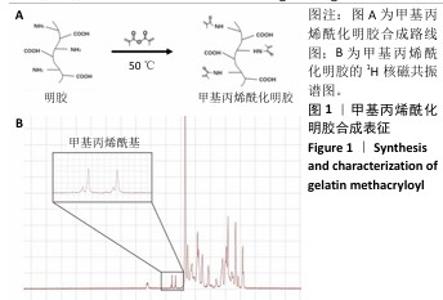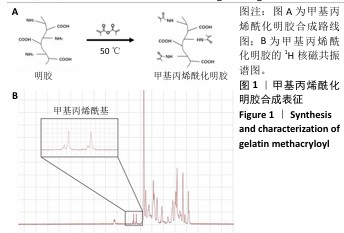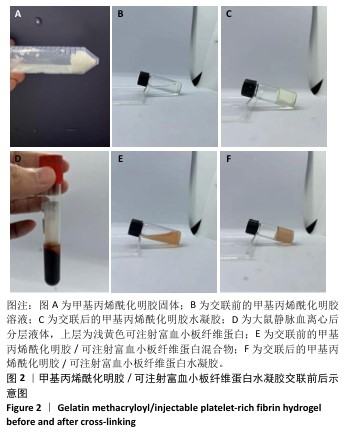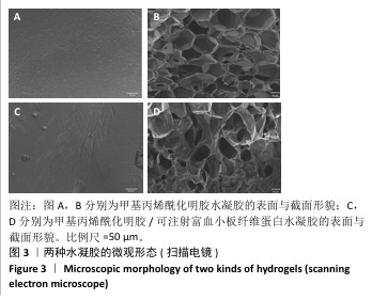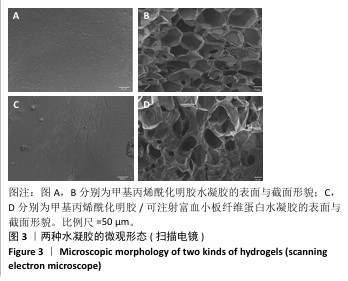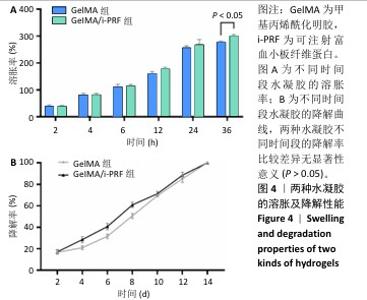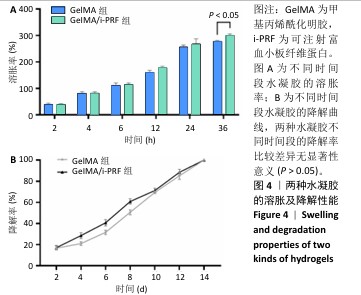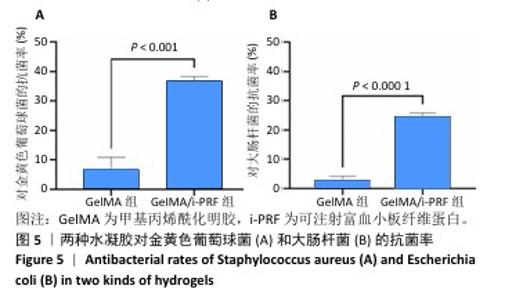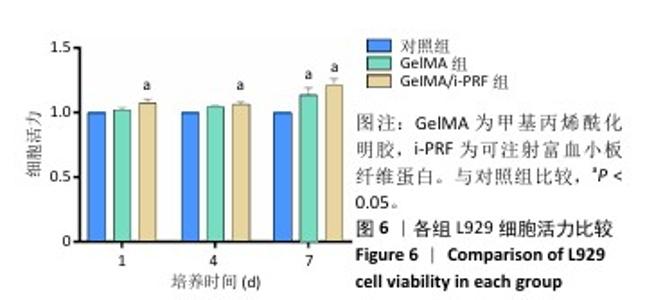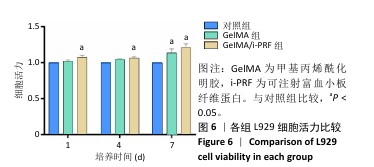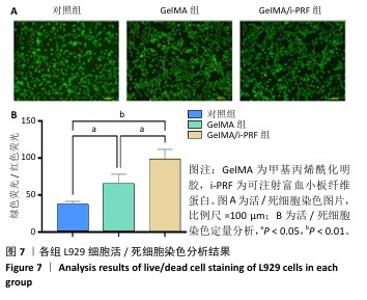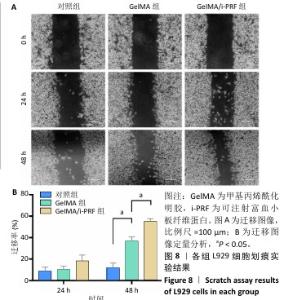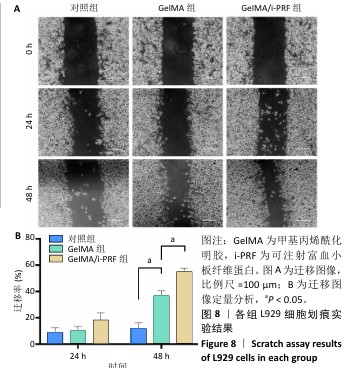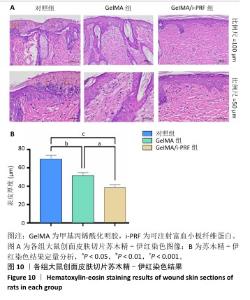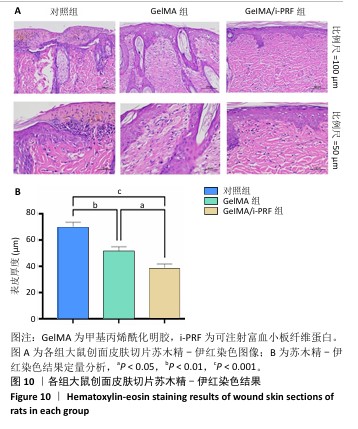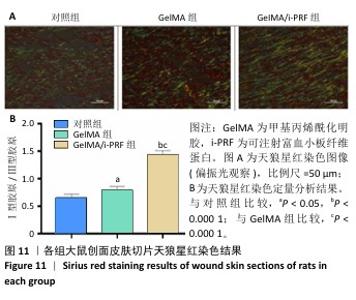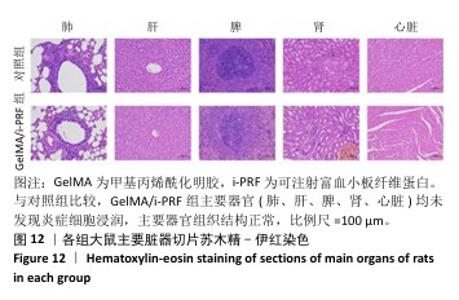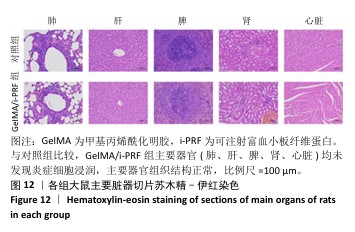[1] LIANG C, HE J, CAO Y, et al. Advances in the application of Mxene nanoparticles in wound healing. J Biol Eng. 2023;17(1):39.
[2] XU C, ZHANG Y, LI H, et al. Carboxymethylated yeast β-glucan: Biological activity screening in zebrafish, sprayable hydrogel preparation, and wound healing study in diabetic mice. Int J Biol Macromol. 2024;285: 138178.
[3] ZHANG W, LIU W, LONG L, et al. Responsive multifunctional hydrogels emulating the chronic wounds healing cascade for skin repair. J Control Release. 2023;354:821-834.
[4] GE X, HU J, QI X, et al. An Immunomodulatory Hydrogel Featuring Antibacterial and Reactive Oxygen Species Scavenging Properties for Treating Periodontitis in Diabetes. Adv Mater. 2024:e2412240. doi:10.1002/adma.202412240.
[5] VAN DEN BULCKE AI, BOGDANOV B, DE ROOZE N, et al. Structural and rheological properties of methacrylamide modified gelatin hydrogels. Biomacromolecules. 2000;1(1):31-38.
[6] DO NASCIMENTO MF, DE OLIVEIRA CR, CARDOSO JC, et al. UV-polymerizable methacrylated gelatin (GelMA)-based hydrogel containing tannic acids for wound healing. Drug Deliv Transl Res. 2023;13(12):3223-3238.
[7] AUBIN H, NICHOL JW, HUTSON CB, et al. Directed 3D cell alignment and elongation in microengineered hydrogels. Biomaterials. 2010; 31(27):6941-6951.
[8] NIKKHAH M, ESHAK N, ZORLUTUNA P, et al. Directed endothelial cell morphogenesis in micropatterned gelatin methacrylate hydrogels. Biomaterials. 2012;33(35):9009-9018.
[9] FU C, QI Z, ZHAO C, et al. Enhanced wound repair ability of arginine-chitosan nanocomposite membrane through the antimicrobial peptides-loaded polydopamine-modified graphene oxide. J Biol Eng. 2021;15(1):17.
[10] LIANG C, WANG H, LIN Z, et al. Augmented wound healing potential of photosensitive GelMA hydrogel incorporating antimicrobial peptides and MXene nanoparticles. Front Bioeng Biotechnol. 2023;11:1310349.
[11] TIAN K, YE J, ZHONG Y, et al. Autologous i-PRF promotes healing of radiation-induced skin injury. Wound Repair Regen. 2023;31(4): 454-463.
[12] DOHAN DM, CHOUKROUN J, DISS A, et al. Platelet-rich fibrin (PRF): a second-generation platelet concentrate. Part II: platelet-related biologic features. Oral Surg Oral Med Oral Pathol Oral Radiol Endod. 2006;101(3):e45-50.
[13] OZSAGIR ZB, SAGLAM E, SEN YILMAZ B, et al. Injectable platelet-rich fibrin and microneedling for gingival augmentation in thin periodontal phenotype: A randomized controlled clinical trial. J Clin Periodontol. 2020;47(4):489-499.
[14] SALEH W, ABDELHALEEM M, ELMEADAWY S. Assessing the effectiveness of advanced platelet rich fibrin in treating gingival recession: a systematic review and meta-analysis. BMC Oral Health. 2024;24(1):1400.
[15] ŞEN DÖ, ŞENGÜL BI, YARKAÇ FU, et al. Impact of platelet-rich fibrin derivatives on patient morbidity and quality of life in palatal donor sites following free gingival graft surgery: a randomized clinical trial. Clin Oral Investig. 2024;28(12):631.
[16] GHADGE KK, SHETTY SK, KHARAT A, et al. Translational implications of a novel combination of iPRF and collagen scaffold for proliferation of gingival mesenchymal stem cells. Sci Rep. 2024;14(1):27789.
[17] GHANAATI S, BOOMS P, ORLOWSKA A, et al. Advanced platelet-rich fibrin: a new concept for cell-based tissue engineering by means of inflammatory cells. J Oral Implantol. 2014;40(6):679-689.
[18] ZENG R, XIONG Y, LIN Z, et al. Novel cocktail therapy based on multifunctional supramolecular hydrogel targeting immune-angiogenesis-nerve network for enhanced diabetic wound healing. J Nanobiotechnology. 2024;22(1):749.
[19] FUJIOKA-KOBAYASHI M, KATAGIRI H, KONO M, et al. Improved growth factor delivery and cellular activity using concentrated platelet-rich fibrin (C-PRF) when compared with traditional injectable (i-PRF) protocols. Clin Oral Investig. 2020;24(12):4373-4383.
[20] ZHANG W, LI Z, ZHANG Q, et al. Ionic conducting hydrogels as biomedical materials: classification, design strategies, and skin tissue engineering applications. J Biomater Sci Polym Ed. 2024:1-24. doi: 10.1080/09205063.2024.2434300.
[21] ALI EM, RAJENDRAN P, ABDALLAH BM. Mycosynthesis of silver nanoparticles from endophytic Aspergillus parasiticus and their antibacterial activity against methicillin-resistant Staphylococcus aureus in vitro and in vivo. Front Microbiol. 2024;15:1483637.
[22] WANG J, WANG W, LI K, et al. A functional hydrogel dressing based on glycyrrhizic acid with low-swelling and moisturizing properties for enhancing infected wound repair. J Mater Chem B. 2024. doi: 10.1039/d4tb01572j.
[23] EGLE K, SKADINS I, GRAVA A, et al. Injectable Platelet-Rich Fibrin as a Drug Carrier Increases the Antibacterial Susceptibility of Antibiotic-Clindamycin Phosphate. Int J Mol Sci. 2022;23(13):7407.
[24] CL K, JEYARAMAN M, JEYARAMAN N, et al. Antimicrobial Effects of Platelet-Rich Plasma and Platelet-Rich Fibrin: A Scoping Review. Cureus. 2023;15(12):e51360.
[25] LIU T, HAO J, LEI H, et al. Recombinant collagen for the repair of skin wounds and photo-aging damage. Regen Biomater. 2024;11:rbae108.
[26] WEI J, WANG B, WANG H, et al. Radiation-Induced Normal Tissue Damage: Oxidative Stress and Epigenetic Mechanisms. Oxid Med Cell Longev. 2019;2019:3010342.
[27] DUNNILL C, PATTON T, BRENNAN J, et al. Reactive oxygen species (ROS) and wound healing: the functional role of ROS and emerging ROS-modulating technologies for augmentation of the healing process. Int Wound J. 2017;14(1):89-96.
[28] ZHAO Y, CHEN J, ZHOU M, et al. Desferrioxamine-Laden Nanofibrous Scaffolds with Efficient Angiogenesis for Accelerating Diabetic Wound Healing. Int J Nanomedicine. 2024;19:10551-10568.
[29] DING L, LIN H, YANG Z, et al. Polycaprolactone/gelatin-QAS/bioglass nanofibres accelerate diabetic chronic wound healing by improving dysfunction of fibroblasts. Int J Biol Macromol. 2024;283(Pt 2): 136699.
[30] ANWAR MA, EL GEDAILY RA, SALAMA A, et al. Phytochemical analysis and wound healing properties of Malva parviflora L. ethanolic extract. J Ethnopharmacol. 2025;337(Pt 3):118983.
[31] NING X, WANG R, LIU N, et al. Three-dimensional structured PLCL/ADM bioactive aerogel for rapid repair of full-thickness skin defects. Biomater Sci. 2024;12(24):6325-6337.
[32] KIM J, JEONG SH, THIBAULT BC, et al. Large Scale Ultrafast Manufacturing of Wireless Soft Bioelectronics Enabled by Autonomous Robot Arm Printing Assisted by a Computer Vision-Enabled Guidance System for Personalized Wound Healing. Adv Healthc Mater. 2024: e2401735. doi: 10.1002/adhm.202401735.
[33] REHMAN SRU, AUGUSTINE R, ZAHID AA, et al. Reduced Graphene Oxide Incorporated GelMA Hydrogel Promotes Angiogenesis For Wound Healing Applications. Int J Nanomedicine. 2019;14: 9603-9617. |
